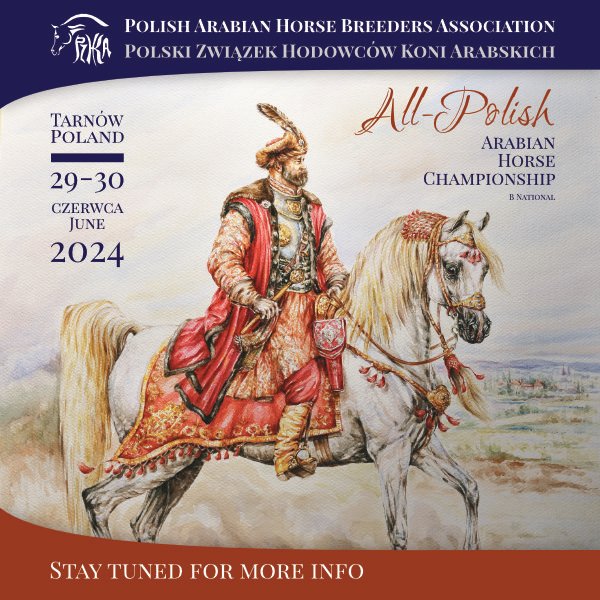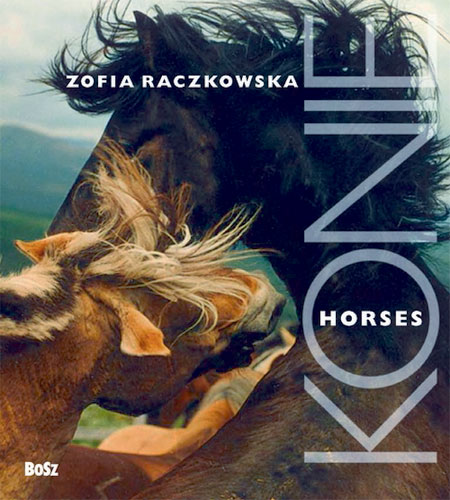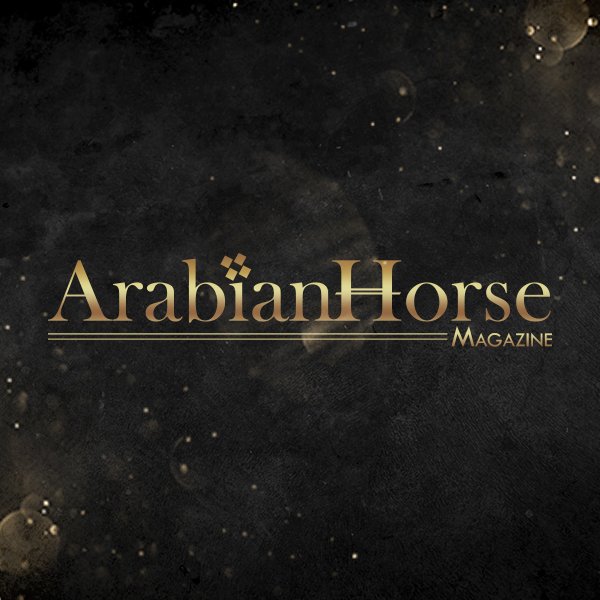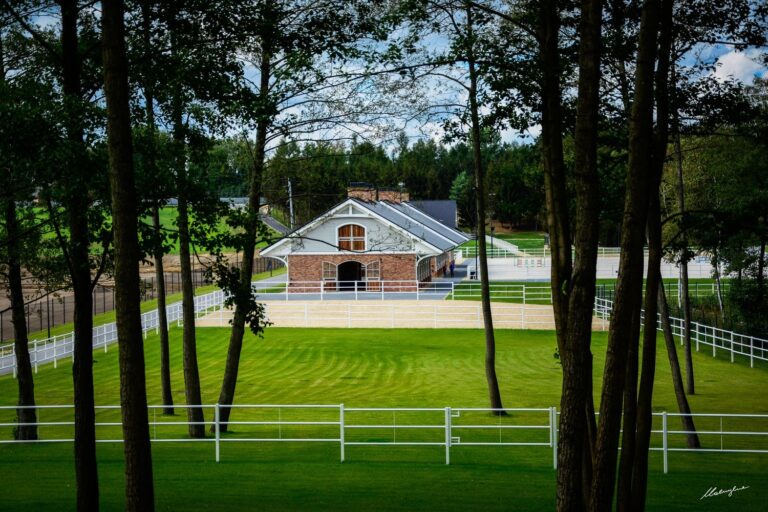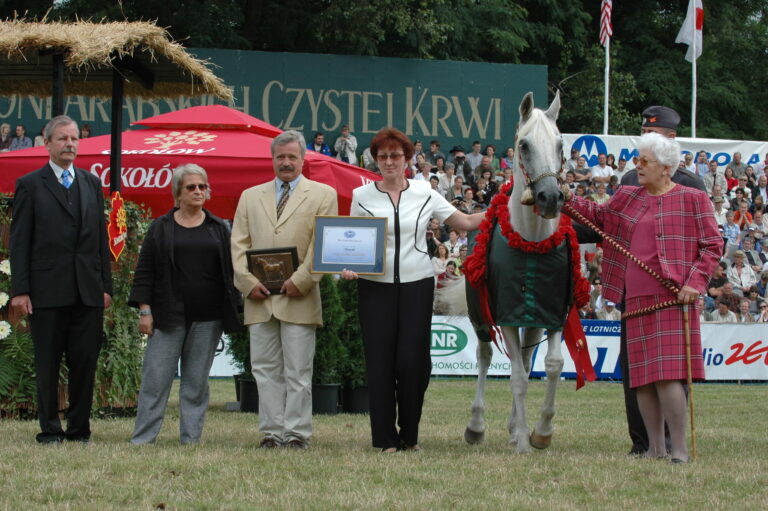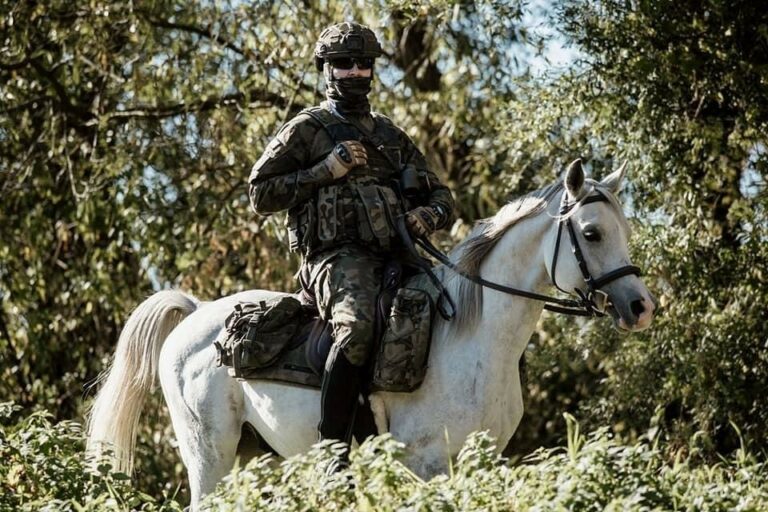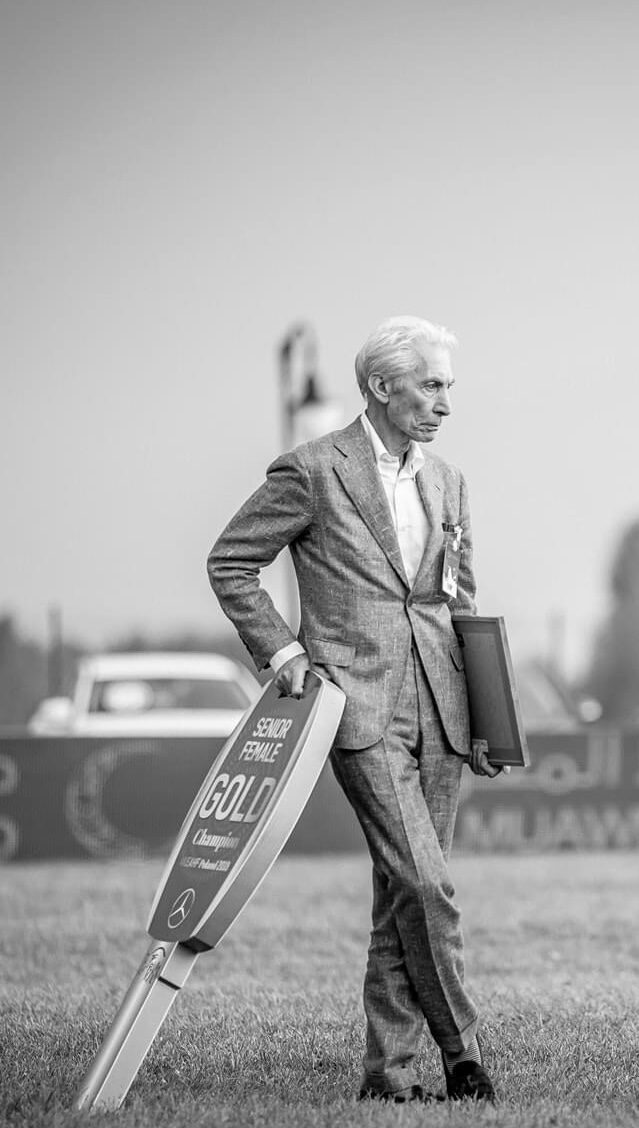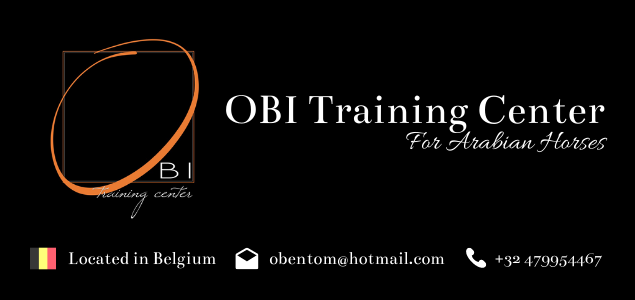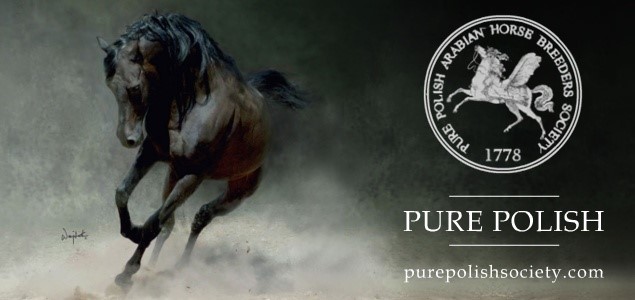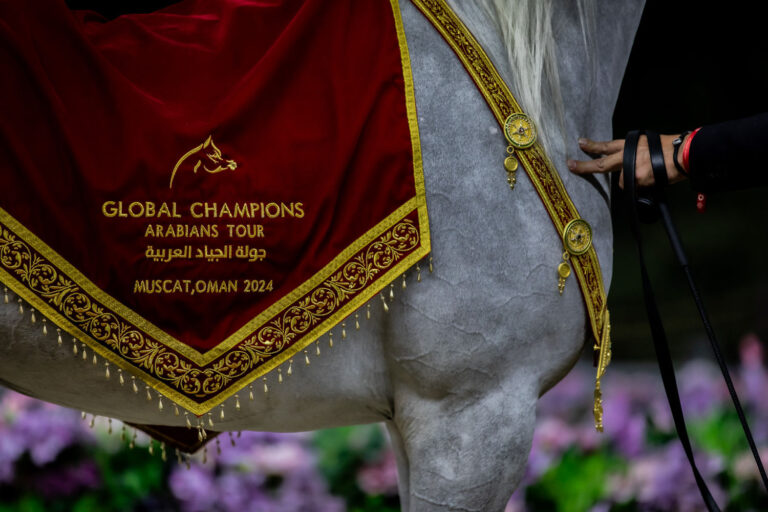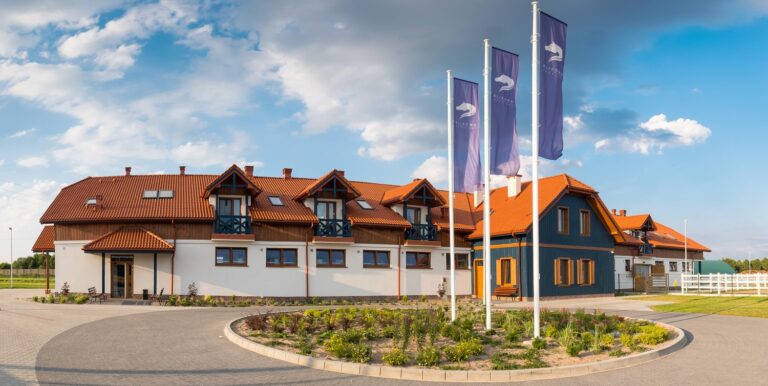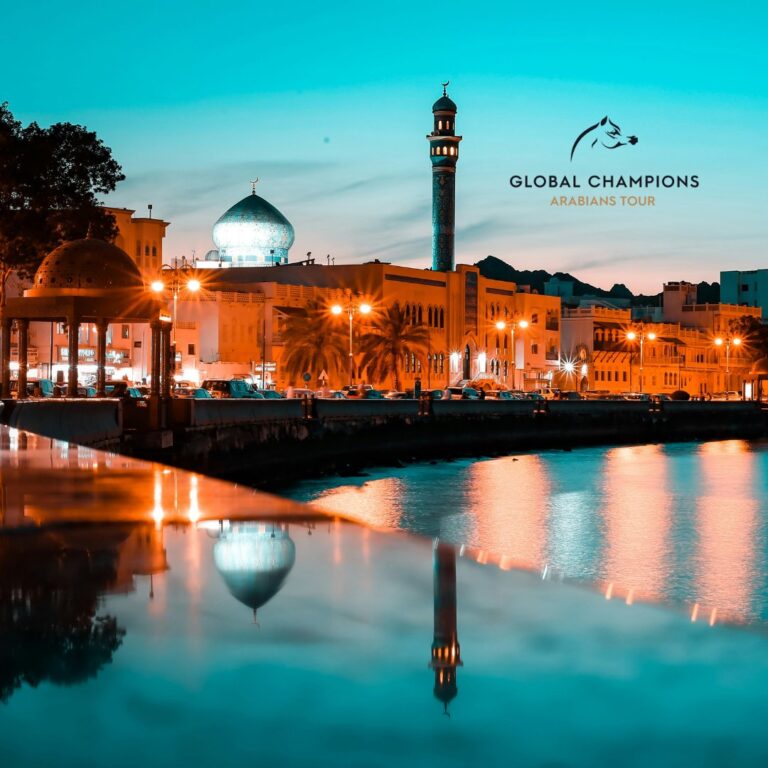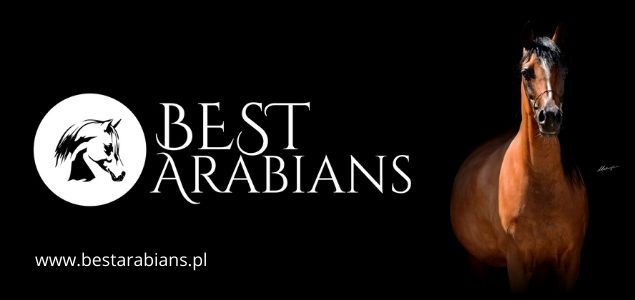Arabian horse enthusiasts do not need to be introduced to Zofia Raczkowska. We all know her portraits of Pilarka and Palas. Everyone has held more than one auction catalogue with her photographs in their hands. Zofia Raczkowska is an equine photography classic, next to Marian Gadzalski and Tadeusz Budziński. She has developed her own unique style, resembling that of a painter, often called “impressionistic”. She liked to photograph horses mainly among natural scenery, out on pastures, where free and unhindered they most fully reveal their beauty.
Today a large selection of Raczkowska’s photographs, including those most known, is brought to readers in a new album titled “Konie” [“Horses”], which has been published by BOSZ Publishing House. The album has been provided with a foreword by the Honorary President of the Polish Arabian Horse Breeders’ Society, Izabella Pawelec-Zawadzka and an afterword by Jerzy Iwaszkiewicz. The photographs are accompanied by the artist’s statements from family archives. “I was born neither a poet nor a painter. Fate put a camera into my hands. I looked through the objective and saw that the world was full of horses”, so Raczkowska describes her calling. Because her life with horses is not only a passion and a job, but first and foremost a mission – a mission to immortalize beauty, which although short-lived, is reborn in subsequent generations.
Raczkowska began to love horses as early as during her childhood. “When I was little my dreams were about horses – she told polskiearaby.com in an interview. – I spent part of my childhood in the countryside and I remember I couldn’t pass a horse without stroking it. My seven years older sister was riding a horse bareback and I was terribly jealous about it, and I was playing truant only to spend time in a pasture. I was trying to hide there but my sister could always spot me from her horse… In later years she took on the passion of photography from her husband Mirosław Raczkowski and combined it with her love for horses. Most of all – for Arabian horses. “It was in Janów Podlaski. I saw mares of all colours standing with their colts. It was a really breathtaking view. They spotted me and raised their heads vigilantly. When I took the camera I realized that my hands were shaking – it was a truly emotional experience.”
In the album we read: “Horses have always stirred my imagination and conjured up an indescribable excitement. I’d feel a painful lump in my throat at the sight of a galloping herd or a charging cavalry in a film, or even in when I heard the sound of cantering.” The author’s emotional relationship towards her photographed objects is more than evident. Raczkowska’s horses are far from those perfectly posed, almost artificial models, with every hair in their coats groomed, owing a great part of their beauty to photoshop. They are living beings close to their natural environment, almost wild, with a stronger bond with nature than with man. They symbolize not only beauty, but also freedom, spirit and strength. Whether they are a group of peacefully grazing horses or a galloping herd, we have no doubts that they have been captured in the best possible moment.
The importance of the album is of great weight – not only as a documentation of Raczkowska’s life full of passion, but also literally. It is a book of a significant size, thanks to which the qualities of the author’s works could’ve been presented in their entirety. The reader can notice every detail, appreciate the composition of the frame, look into the eyes of the photographed objects. It’s only a pity that there is a lack of basic information for the Arabian horse aficionado about who exactly is portrayed…. For the consummate “Arabianist” it is not the sole horse that is relevant, but also his pedigree, which makes for a story carried in his genes and the associated with it hope for the future. Of course the most renowned stars are easily recognized – but that is not enough, we would also like to know the identity of other portrayed horses, or at least to know where they come from – Janów Podlaski, Michałów or perhaps Kurozwęki, as even there Zofia Raczkowska found her way with a camera. Although the album is not devoted solely to Arabians – the reader will find photographs of various breeds, also Scandinavian equines with which Raczkowska is greatly fascinated by, such as Fjords or the Norwegian Doles – it’s still a shame that there is no index, which would serve as a guide at least to the “Arabian” identities for the more inquisitive readers.
The album’s good point is definitely its bilingualism – beside the Polish version there is also its English counterpart, provided by Teresa Bałuk-Ulewiczowa.
Zofia Raczkowska: „Konie” („Horses”), BOSZ 2011, 255 pages
You can find our interview to Zofia Raczkowska here: When Pilarka was a queen


